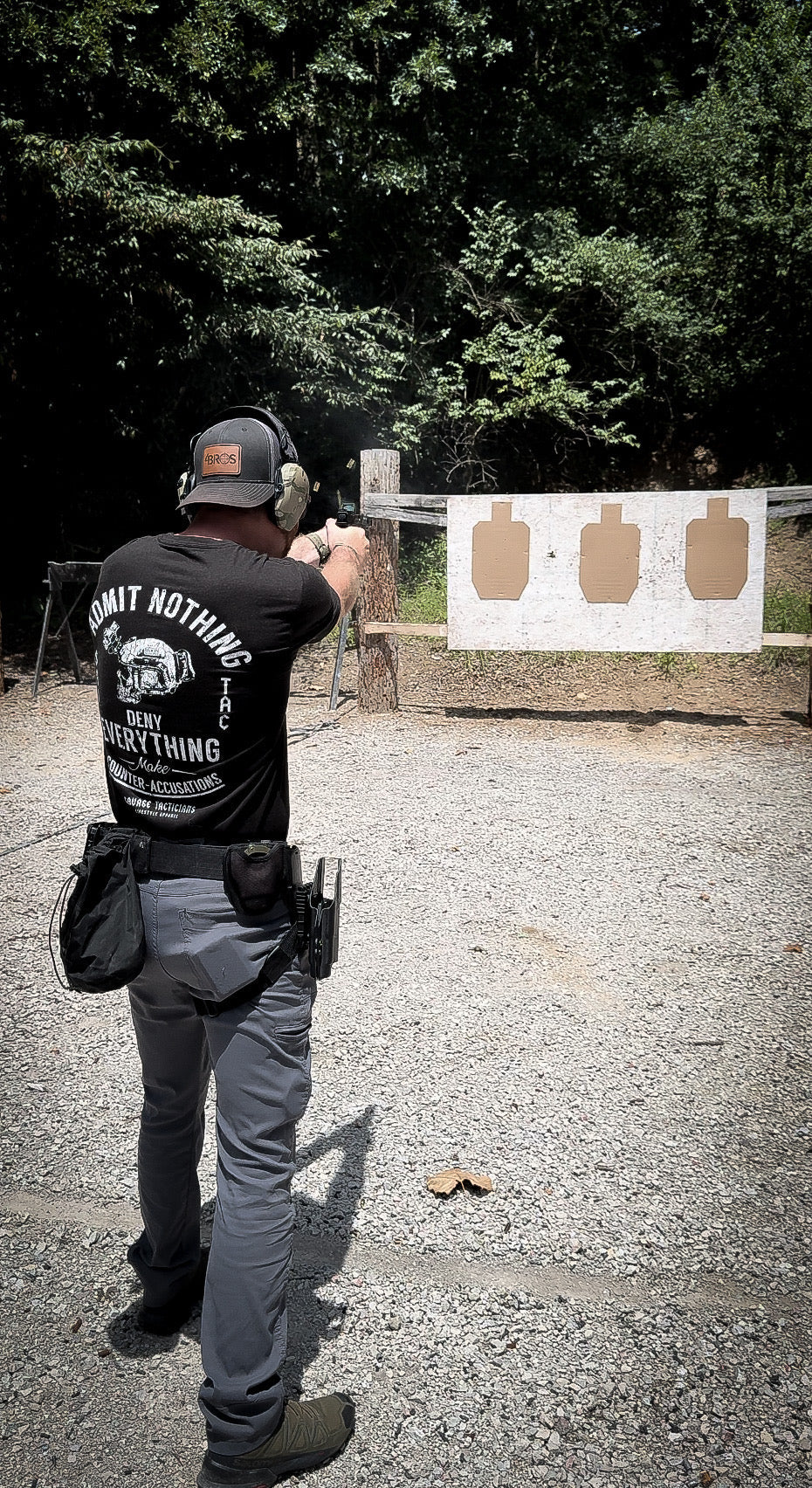
The 5 Drills in 5 Weeks Challenge
Share
The 5 Drills in 5 Weeks Challenge is simple. Complete the 5 drills below in 5 weeks or less, post a video on your social media page of each drill and send us all 5 links to team@fourbrothersinc.com.
Once completed, we will send you a free 4Bros Worn Flag T-Shirt.
Here’s a summary of the 5 drills:
The Bill Drill:
The Dope Drill:
The DOPE (Data on Previous Engagement) Drill is a shooting exercise for handguns and rifles that measures speed and accuracy by calculating a "hit factor.” This drill is like the Bill Drill but at a more advanced level. Participants shoot at different distances (5-25 yards) aiming for the A zone on the target while recording time and points earned. The drill emphasizes adjusting speed for accuracy at varying distances. The hit factor is determined by dividing total points by total time. This drill enhances skills at different distances and emphasizes the balance between speed and accuracy for both handguns and rifles.
The El Presidente Drill:
The El Presidente Drill is a classic shooting exercise that challenges speed, accuracy, and target transitions. Participants engage three targets with two shots each at 10 yards after a 180-degree turn and a mandatory reload. Target transition speed and reload efficiency are crucial skills for practical shooting scenarios. This requires balance of speed and precision. By emphasizing smooth target transitions and efficient reloads, the El Presidente Drill enhances shooting speed while maintaining accuracy. Incorporating this drill into training adds a fun and valuable dimension to skill development. Safety is paramount when performing this drill, as is in any drill, so it’s important to prioritize safe handling over speed.
The Mozambique Drill:
The Mozambique Drill, also known as the Failure to Stop Drill, is a defensive shooting exercise focusing on accuracy and decision-making under stress. Participants engage a target at 7 yards by firing two shots to the center mass followed by a headshot. This drill simulates scenarios where an assailant may not be immediately neutralized by body shots, emphasizing quick and accurate shots to different target areas. The drill enhances controlled shooting, rapid target acquisition, and the ability to deliver multiple shots efficiently in real-world defensive situations. While the standard drill includes two shots to the center mass and one to the head, participants can adjust by incorporating multiple shots before aiming for the head to effectively stop the threat. Practicing the Mozambique Drill can improve shooting skills and readiness in defensive scenarios and can be turned into a friendly competition for added motivation.
The 1-Reload-1 Drill:
The 1-Reload-1 Drill is aimed at improving quick reloads while maintaining accuracy, ideal for competitive and self-defense shooters. Participants start with one round in the chamber and an empty magazine, shooting one round, then performing a speed reload and shooting a second round. This drill enhances reloading proficiency under pressure without excessive ammo use. By incorporating the 1-Reload-1 Drill into training, shooters can improve their shooting efficiency and mag loads.

